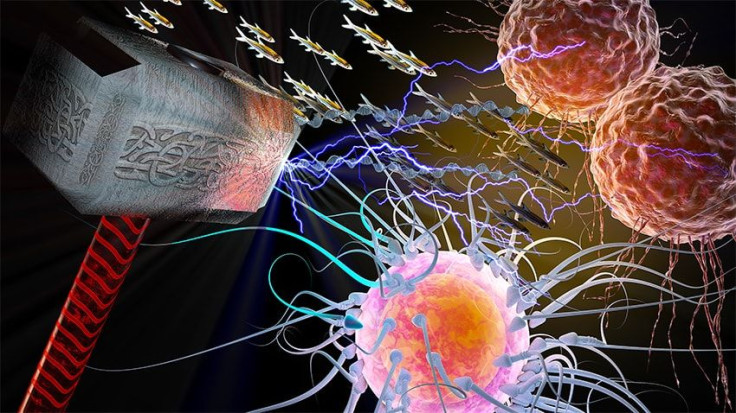Defeating Newly-Discovered THOR Gene Can Halt Cancer Growth: Study

Thor, the God of thunder was banished from the heavenly Asgard as a lesson in humility. Now, researchers found that banishing a gene named THOR from the body can halt the growth of cancer.
A team of researchers from the University of Michigan's Comprehensive Cancer Center discovered this novel gene they named THOR while dwelling deep into their study of the human genome.
THOR, which stands for testis-associated highly conserved oncogenic long noncoding RNA is a kind of long noncoding RNA (lncRNA) that is expressed in humans, mice and zebrafish.
For a lncRNA to be spread through such a gamut of species is unheard of. The team figured the RNA could serve a vital function if it conserved in species that aren’t human.
"Genes that are evolutionarily conserved are likely important for biological processes. The fact that we found THOR to be a highly conserved lncRNA was exciting. We chose to focus on it with the thought that it has been selected by evolution for having important functions," said Arul Chinnaiyan, director of the Michigan Center for Translational Pathology and S.P. Hicks Endowed Professor of Pathology at Michigan Medicine in a press release.
When the team studied the function of THOR they found it played a role in the development of cancer cells in the body's cells and also that removing it halted the further growth of tumors present in the affected body.
The same team pioneered the first steps into researching this unknown area of the human genome. In a 2015 paper, the team put forth the first major findings from their analysis of an area known as the "dark matter" of the human, because there is very little information available about them.
The team identified thousands of potential lncRNAs in this study that could possibly be responsible for several major characteristics in the human body, making them crucial to future study.
THOR was given particular importance because it was evolutionarily highly conserved. It is primarily expressed in the testes cells and shows little to no expression in other types of adult normal tissue.
"That is one of the challenges of studying lncRNAs that are not conserved. If they’re not conserved in model systems, they are difficult to characterize. Here, because THOR is so highly conserved, we were able to look at its expression and function in zebrafish models," Chinnaiyan said.
THOR was also highly expressed in some subsets of cancers, particularly lung cancer and melanoma. THOR’s expression was directly linked to cancer development.
The team found that the protein synthesis that THOR undergoes produces functional RNA that aids cancer development. The team also found that knocking THOR off cell lines that show expression slowed down tumor growth.
Cells, where THOR was over-exposed grew faster than cells with normal THOR expression. But, cells where THOR was removed still continued normal growth which led the team to believe that THOR primarily aids only cancer growth and does not impact cell growth of function otherwise.
Researchers also found that THOR impacted proteins called IGFBPs, which are thought to be involved in stabilizing RNAs. Eliminating THOR from cells inhibited IGFBP activity.
"If we perturb THOR function, we disturb the ability to stabilize RNA. This inhibits cell proliferation," Chinnaiyan said.
The researchers are now looking to create a compound that binds with THOR in a complementary sequence designed to knock it down. This approach, known as antisense oligonucleotides, has been used successfully in other contexts. This drug will not affect the cells in the body which mean lesser side effects.
The researchers published their results in journal Cell on Dec. 14.
© Copyright IBTimes 2025. All rights reserved.





















